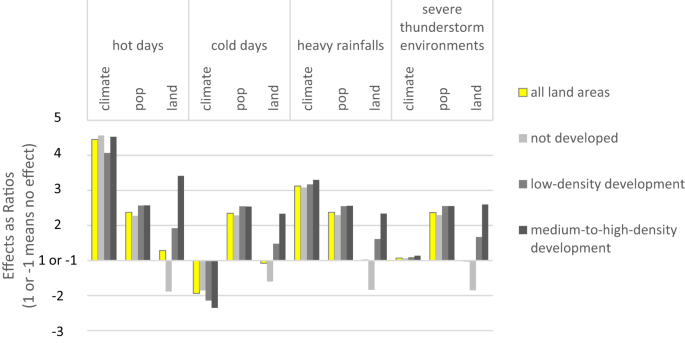2023-11-09 デラウェア大学 (UD)
◆研究者たちは、将来の極端な天候に対する都市の空間配置の特徴を特定し、都市設計や計画に影響を与える具体的な提案を提供することを目指している。
<関連情報>
- https://www.udel.edu/udaily/2023/november/urban-land-patterns-future-weather-extreme-exposure/
- https://www.nature.com/articles/s41467-023-42084-x
都市の土地パターンは、21世紀の気候の極端な変化に対する人口の暴露を緩和することができる。 Urban land patterns can moderate population exposures to climate extremes over the 21st century
Jing Gao &Melissa S. Bukovsky
Nature Communications Published:26 October 2023
DOI:https://doi.org/10.1038/s41467-023-42084-x

Abstract
Climate change and global urbanization have often been anticipated to increase future population exposure (frequency and intensity) to extreme weather over the coming decades. Here we examine how changes in urban land extent, population, and climate will respectively and collectively affect spatial patterns of future population exposures to climate extremes (including hot days, cold days, heavy rainfalls, and severe thunderstorm environments) across the continental U.S. at the end of the 21st century. Different from common impressions, we find that urban land patterns can sometimes reduce rather than increase population exposures to climate extremes, even heat extremes, and that spatial patterns instead of total quantities of urban land are more influential to population exposures. Our findings lead to preliminary suggestions for embedding long-term climate resilience in urban and regional land-use system designs, and strongly motivate searches for optimal spatial urban land patterns that can robustly moderate population exposures to climate extremes throughout the 21st century.



